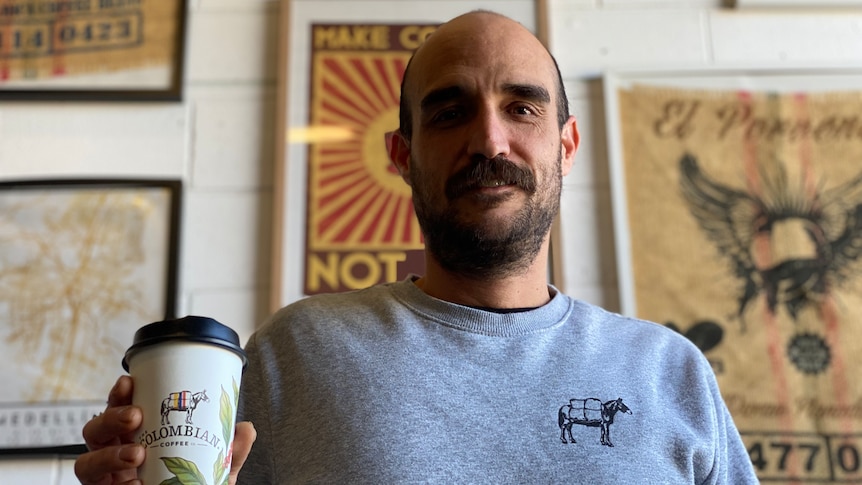If your morning cup of coffee has left a sour taste in your mouth lately, it may not be the beans, but the price tag that’s causing you to feel bitter.
Key points:
- Coffee sellers say the price of coffee has gone up 20–30 per cent in the past 12 months
- The average price of a medium, basic coffee is about $5 across the country
- The coffee industry warns it could be 12 to 18 months before the price comes down again
The price of a flat white – and any cafe-made coffee – has been forced up not just by the cost of international freight and wages, but incidentals such as the wholesale price of caramel syrup.
What’s the average price of a coffee now?
Colombia Coffee Co’s Daniel Mejia owns multiple cafes and is a wholesaler of coffee beans on Queensland’s Sunshine Coast.
He said people should expect to pay between $4.50 and $5.50 for an average 250ml (8oz) coffee without fancy milk or extra shots of espresso.
“When you pay $5.50 for an eight-ounce coffee, then the expectation that you should have as a customer is that it will be a top-class coffee,” he said.
“You pretty much want to walk out of that shop, raving about the coffee you just had.
“A coffee that used to cost $5 is now probably $6.”
He said every single element of coffee making is now more expensive: the beans, the electricity used to heat water, the maintenance of the machines, the milk and any alternative to milk.
“But if you get a flat white with an extra shot on soy, with a shot of caramel, then the soy has increased as well.
“The shot of caramel that used to be 50 cents, is probably 70 or 80 cents.”
Perfect storm in your coffee cup
Bruno Maiolo has headed the Australian Specialty Coffee Association for 20 years and runs C4 Coffee in Melbourne.
He said $5 was the right price to pay for an average, medium coffee that would have cost $3.80 a year ago.
But while it was more expensive, cafes were still not passing on the full costs.
“Just on supply and trade issues, a cup of coffee should really be closer to $7 if everyone was to maintain the same margin they’d been enjoying pre-COVID.”
“[The price] will still creep up. It just has to because you have to spend on the costs.”
Mr Maiolo said many factors both around the world and in Australia were coming together to push up the price of a barista-made cappuccino.
He said the biggest contributor was COVID, which not only forced farms in many countries to shut down, but also caused a huge number of deaths, which had an impact on their workforces.
When the beans were sent across the world in a shipping container, that too was costing more.
Mr Maiolo said the cost of a transporting a container had risen six-fold from $2,500 to about $15,000.
On top of these factors, Brazil – a major coffee-growing region – endured a massive frost last year which meant fewer beans were picked.
With increased demand and fewer beans, the price went up even further.
Mr Maiolo said none of these factors were likely to resolve any time soon.
“The price will stay high for quite some time, at least the next sort of 12 to 18 months, before we can start getting some sort of normality in terms of freight and logistics,” he said.
Making coffee ‘more than business’
Back on the Sunshine Coast and Mr Mejia said while he felt he had no choice but to increase the price of his coffee, it was a painful decision to make.
He said the survival of his business was not the only thing on his mind.
“Coffee is the social lubricant that keeps people flowing around and connecting with each other.
“We are the keepers of that, and we embrace that role beyond our business and more like a community role.”
.
